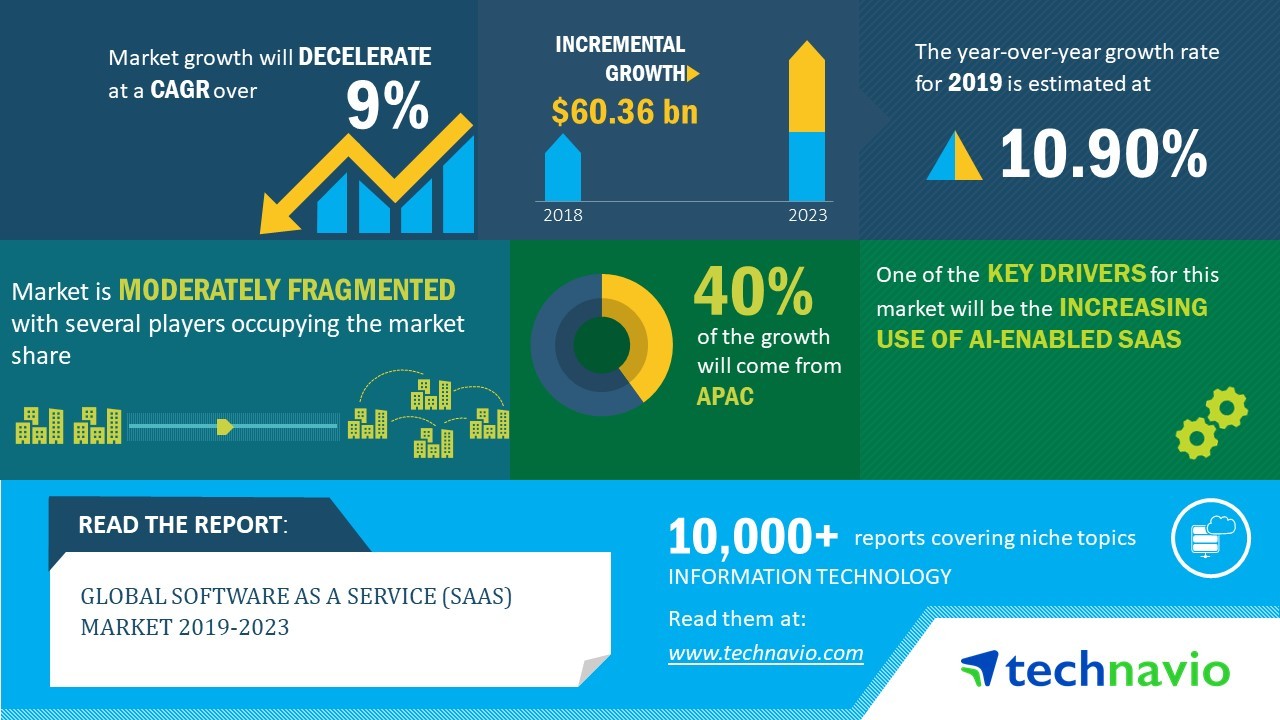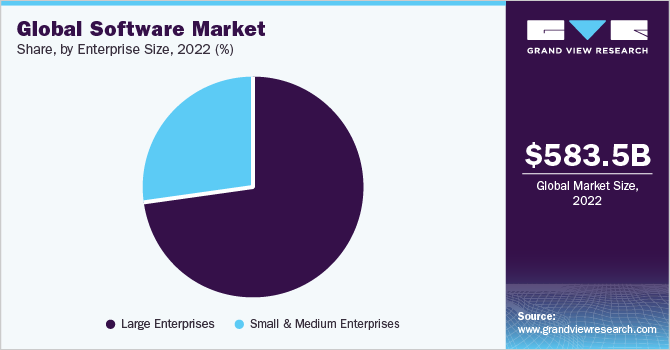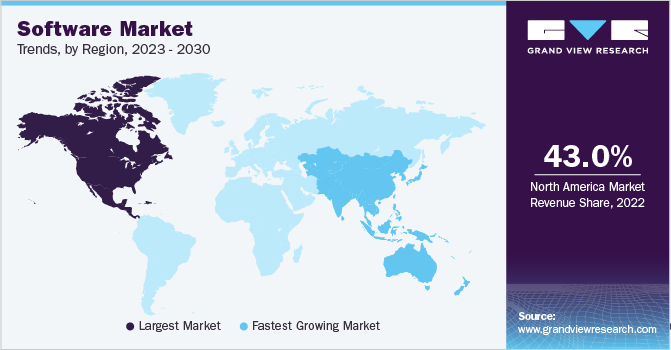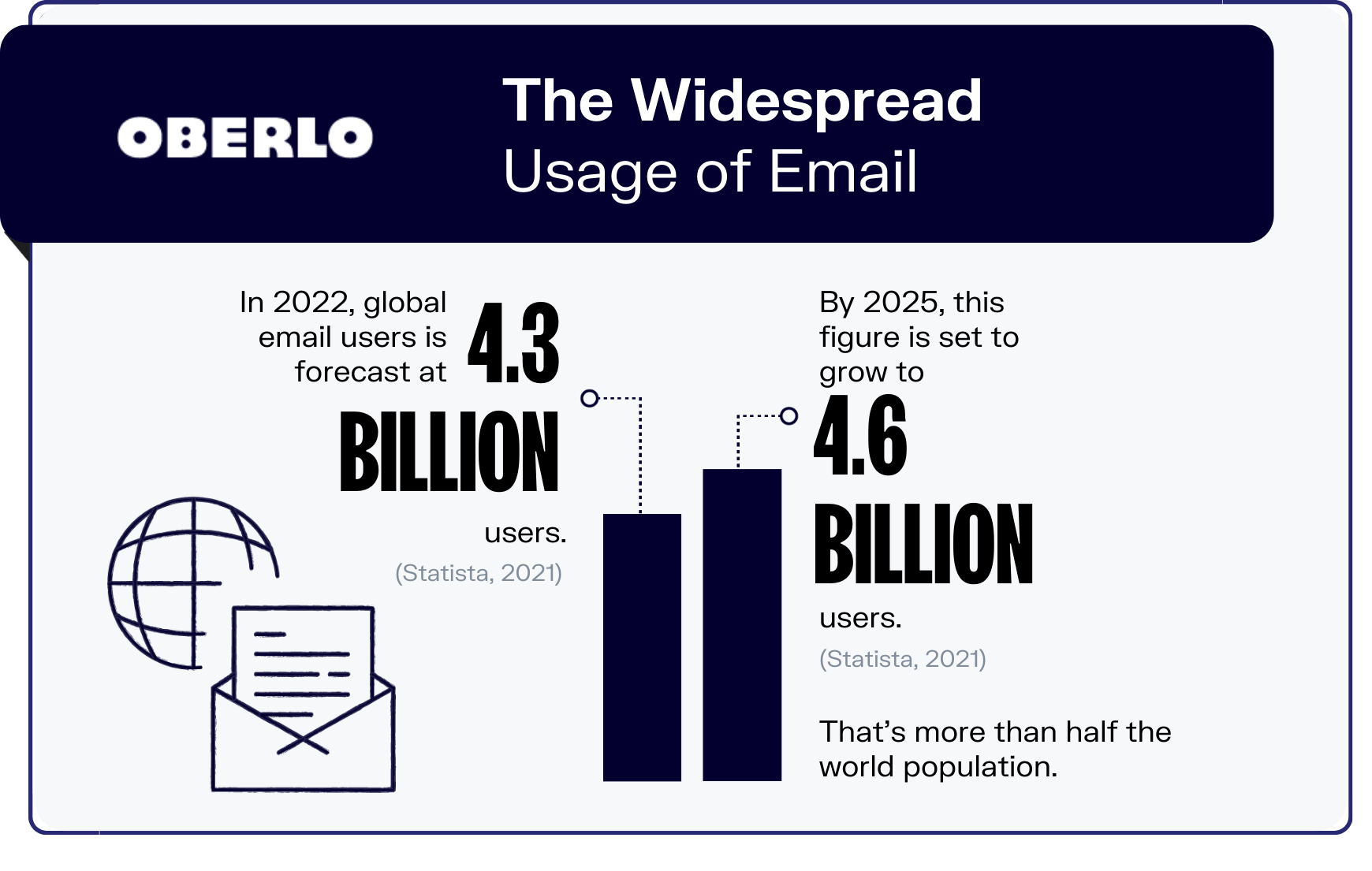The software market is expanding rapidly, hitting $659 billion in 2023. With a projected compound annual growth rate (CAGR) from 2023 to 2028 of 5.42%, the market could reach $858 billion in 2028. For newcomers to the market, now is a great time to start your own software development company.

You must settle on your software niche and target customers, choose a sustainable business model that matches, handle legal and regulatory requirements, and develop a minimum viable product to validate your software idea in the market.
This guide will walk you through how to start a software company. Topics include market research, competitive analysis, registering an EIN, forming a legal business entity, marketing, and more. Here’s everything you need to know to reach your target market and build your own software company.
1. Conduct Software Market Research
Market research is essential to reaching your target market and obtaining integral information for your business plan. There are two types of market research, primary research you compile yourself, and secondary, compiled by third parties. Both are important.

Several trends are driving growth within the industry:
- Cloud computing and software-as-a-service (SaaS) remain top priorities for companies looking to reduce infrastructure costs and enable workforce mobility.
- The rise of data analytics, artificial intelligence (AI), and Internet of Things (IoT) applications is opening lucrative new markets centered on gathering and drawing insights from enterprise data.
- 5G networks, smarter devices, and edge computing will pave the way for more advanced software experiences going forward.
- With digital transformation initiatives in full swing, demand for custom software development services shows no signs of slowing.
- In terms of market segments, MarketsandMarketsTM anticipates infrastructure software delivering the most opportunity with a projected CAGR of 15% through 2026.
- The United States software market alone is poised to reach almost $300 billion by 2026 according to Statista.
For aspiring software entrepreneurs, independent software vendors (ISVs) and software product startups represent the most lucrative avenues to capitalize on this expansive market without competing against tech juggernauts.
2. Analyze the Competition
Understanding the competitive landscape among software development companies is crucial when launching any software venture. The first step is identifying direct competitors, and businesses offering similar solutions for your target users. Search online product directories like G2 to find rivals.
Examine competitors’ websites and marketing materials to analyze product features, pricing models, and positioning strategies. Download trial versions to benchmark your planned functionality and UX if possible. This reveals gaps or areas for differentiation to develop business expertise.

Next, research indirect alternatives that customers might also consider, even if not the same software category. For example, someone shopping for a task management app could choose between dedicated software or a notebook and pen. Tracking indirect substitution threats prevents blind spots.
Evaluate both online and brick-and-mortar competitors since software can displace traditional businesses. A social media management platform now competes with PR agencies for marketing budgets. Benchmark competitor performance through financial profiles and user reviews. This gauges market viability while identifying potential weaknesses.
Monitoring market share trends over time shows which players are gaining or losing ground. Use search data from Google Trends and global web traffic analytics from SimilarWeb. Surging interest in a rival warrants further investigation so you can emulate strengths or avoid pitfalls. Consider what they offer in terms of app (mobile or otherwise) development and what sort of services customers can expect.
Ongoing competitive analysis lets software companies continuously adapt and improve their market positioning as the landscape evolves. When armed with these insights on day one, founders make far more informed strategic decisions for a greater likelihood of startup success and faster traction.
3. Costs to Start a Software Business
Starting a software development business requires some startup and ongoing costs. This might come from savings venture capital funds, or other means. Let’s break down the costs you’ll encounter through your endeavors in the software industry.
Start-up Costs
- When starting a software company, the initial costs consist of legal formation, development tools, talent, and basic infrastructure.
- Incorporating as an LLC or corporation protects founders’ assets and establishes business banking abilities. This registration runs around $500-$1500 depending on complexity.
- Software engineers rely on specialized IDEs and collaboration platforms for building products efficiently. An all-in-one cloud development suite like GitHub Copilot costs $10-$50 per user monthly.
- Founding teams should budget sizable upfront investment for development talent to architect the software and MVP. Depending on location and seniority, software developers earn $60-$150+ hourly.
- With an average-sized team of three engineers working three months until launch, labor costs land around $100k conservatively.
- Cloud infrastructure for hosting solutions and web operations adds more payload, basic Linux servers on Amazon AWS or Microsoft Azure cost a minimum of $500 per month all-in.
- Pre-launch office space depends largely on the team’s working preferences. Globally distributed startups operate remotely which removes this sunk cost.
- Others opt for flexible coworking with dedicated desks for $300 monthly per member.
- Traditional office leases average $20/sq.ft. in major metros, so a 1,500 sq. ft space totals around $30k yearly.
- IT expenses kick in for company equipment and SaaS platforms powering business functions like email, documents, CRM, and accounting/billing.
- Buying or leasing a few laptops/workstations at $2k per unit enables mobility and at-home work.
- Subscription SaaS suits like G Suite or Office 365 add $5 per user monthly, while infrastructure necessities like VPNs and cloud storage cost another $10 each.
- Standalone accounting software averages around $15/month for essential financial tracking.
Ongoing Costs
- Post-launch, the two biggest recurring costs are talent and web hosting depending on release cadence.
- Payroll tends to run 60-80% of revenue for engineering teams in particular.
- Common hosting configurations serving modern SaaS apps to enterprise customers fall in the $2500-$5000 per month range.
- Operational budgets should accommodate reliable customer support channels as well via in-house reps or contracted live chat services costing additional monthly fees per agent.
- Marketing budgets fluctuate more drastically based on the growth stage, early bootstrappers rely on gritty guerilla tactics first with dedicated digital spend scaling later.
- Industry averages see 10-25% of revenue reinvested into sales and promotions.
- Other fixed overheads like office rent/mortgage, equipment leases, software subscriptions, and utilities remain ongoing should brick-and-mortar facilities suit the business.
By architecting lean, capital-efficient operations early on, software startups contain costs for sufficient runway pursuing viral adoption and retention. With financial diligence and creative human capital strategies, most baseline operating budgets for promising plays land well below $1 million annually.
4. Form a Legal Business Entity
When establishing a software business, the legal structure carrying the most benefits is a limited liability company (LLC). LLCs limit personal liability for founders protecting personal assets if the company faces lawsuits or bankruptcy. There are other entities to consider, let’s look at them all.
Limited Liability Company (LLC)
Registering an LLC still grants credibility to customers accustomed to dealing with incorporated vendors. Overall, an LLC enables easier accession of startup capital and distributed ownership for scalable growth.
LLC maintenance involves less paperwork than corporations too. Most importantly, an LLC separates personal and professional finances if legal problems arise.
Sole proprietorship
Sole proprietorships as the easiest and cheapest option offer no liability buffer or tax incentives. Members are personally responsible for all business dealings good and bad. This intrinsically caps software service offerings due to amplified risks shouldering every client engagement.
Sole proprietors face disadvantages in attracting investors and partners given the lack of structure. cliffs when adding employees and growth capital. This model suits freelance developers more than ventures plotting unicorn ascension.
Partnership
General partnerships allow collaboration between founders without formal registration. Profits and losses flow through to personal returns equally by default. Partners jointly share liability exposures from collective actions, however. Disagreements can trigger painful dissolutions if unincorporated too. Introducing new partners alters the entity immediately increasing risks.
Corporation
Finally, C corporations institute the strongest protective and taxation measures like income splitting among classes of shareholders. This flexibility supports varied ownership stakes for investors and employee equity plans. However statutory C corps limit recruiting chances with non-competes.
Double taxation of both corporate and personal income hikes compliance overheads. Admin responsibilities compound as share distributions and ownership modifications occur over fundraising rounds. Unless pursuing an acquisition exit, LLC nimbleness eclipses C corporations for software startups.
5. Register Your Business For Taxes
Forming a legal business entity requires registering for an employer identification number, or EIN, through the IRS to identify tax obligations. Software companies organized as LLCs, partnerships, and corporations all need EINs for federal income tax reporting tied to annual profits or losses.
Thankfully obtaining an EIN takes just minutes online through the IRS EIN Assistant. This free tool lets founders get their EIN immediately without filling out paperwork or lengthy processing delays.
To start, navigate to the EIN Assistant and select your business structure. You’ll need supporting details like business name, address, and principal officers on hand. Next, answer a short Q&A about operations and ownership. The online wizard customizes the experience based on responses. Finally, provide contact information and submit the form to instantly receive a congrats notice displaying your new EIN!
With the EIN secured, the next steps include registering with your Secretary of State for state tax identification numbers to collect and remit sales tax in applicable jurisdictions. Unlike the streamlined EIN application, navigating individual state registration procedures takes more time researching filing requirements and costs.
Leaning on tools like TaxJar helps centralize registration and automate tax calculations across channels. Expert support proves worthwhile in preventing common founder missteps from entering new regulatory territories. Consider the small investment in proper registrations crucial long-term insurance should your startup software sales ever capture regulatory scrutiny.
6. Setup Your Accounting
Proper financial tracking proves pivotal for software startups given the intricate revenue models and operating cost structures scaling SaaS ventures face. Without organized books, founders risk growth obstacles down the road when pursuing funding rounds, licensing agreements, or even responding to IRS audits.
Accounting Software
Deploying small business accounting software like QuickBooks connects bank/credit card accounts to import and categorize transactions automatically. This visibility assists in managing cash flow, recurring bills, invoicing, taxes, and reporting.
Built-in reconciliation and inventory features reduce overhead. Integrations with payroll processors accelerate compliance too. Plans start around $15/month for essential needs and up to $150 monthly for advanced configurations managing everything finance-related across departments company-wide.
Hire an Accountant
Most software founders still benefit long term by outsourcing nitty gritty bookkeeping to qualified accountants and CPAs. External experts handle reconciling accounts, preparing financial statements, optimizing taxes, and advising on growth decisions beyond software limitations.
Expect to invest around $150 per month for ad hoc small business accounting support from regional firms. Costs scale up to $5000 monthly with specialized departments serving fast-growing tech startups.
Open a Business Bank Account
Maintaining entirely separate business finances prevents commingling assets an easy trigger for shareholder disputes or tax agency flags if growth accelerates. Always sign up for dedicated credit cards and bank accounts used exclusively for software company expenditures no matter how small initially.
Apply for a Business Credit Card
Credit limits for new business cards often match personal history initially around $1000-$5000. Utilization below 30% of thresholds helps qualify larger credit lines over time as the business matures. Apply with supporting documents like your EIN paperwork, projected financials, and pricing models ready to convey long-term viability underwriting business card approval.
7. Obtain Licenses and Permits
Though software businesses operate predominantly online, local business permits still apply to legalize in-person elements like headquarters and field staff. Find federal license information through the U.S. Small Business Administration. The SBA also offers a local search tool for state and city requirements.
If leasing dedicated office space, confirm the property is zoned for commercial use and equip work areas to meet occupancy codes. Constructing office build-outs requires approved building permits even within existing floorplans.
Property managers or city offices can provide zoning certificates and permit paperwork listing requirements like maximum occupancy, construction specs, safety equipment, and accessibility. Budget $100-$500 for standard permits.
Nearly every municipality mandates registering new businesses through simple forms and nominal fees below $100. This verifies lawful activity and local tax status for policy compliance. Software firms with traveling sales teams or installation crews face enhanced bureaucracy navigating county-by-county procedural variances exceeding remotely operated startups.
Transaction privilege taxes (TPT) apply for Arizona-based businesses while Washington levies a business & occupation (B&O) tax requiring upfront registration. These assessments target revenue tied to sales volume rather than company profits.
Uninformed software enterprises trip over retroactive corrections once enforced. SaaS providers likewise must carefully navigate complex nexus rules for charging sales tax appropriately across state borders as growth spreads.
Finally, directors overseeing certain financial processes undergo routine background checks and bonding under statutes like the Investment Advisers Act. While rare for earlier-stage ventures, formally constituted boards with outside directors may need to file disclosures and retain insurance policies if handling client assets or investments clinically.
Though mundane, even software sellers dealing strictly in digital goods must vet business licenses to continue operating lawfully. Skirting these bureaucratic logistics hands over easy wins for predatory legal opponents. Invest time initially consulting with local regulators and legal support to confirm full compliance.
8. Get Business Insurance
Even internet-based software sellers need insurance safeguarding operations from existential threats. Policies cover costly legal actions, cyber crimes, natural disasters, and equipment failures jeopardizing business continuity when disaster strikes.
Without adequate coverage, a data breach exposing customer information risks enterprise-ending class action lawsuits. Hackers could likewise cripple systems through ransomware attacks halting sales indefinitely without insurance-covered restoration. Severe weather alternatively might damage uninsured office spaces or hardware threatening workflow bottlenecks.
Securing protection begins by taking stock of business vulnerabilities with agents at providers like Hartford or State Farm. Common starter policies bundle general liability shielding third-party incidents, commercial property damage, loss of income, and professional liability. Costs range from $500 – $5000+ annually scaling with payroll, office square footage, and policy customization.
The application process requires documenting business details like location, ownership structure, staff size, financials, operations, and policy needs. Underwriters assessing risk exposure request relevant permits, licenses, and past insurance history also.
Once bound, software businesses must report substantial changes in operations impacting coverage like adding new services, foreign expansion, or enlarged payroll in case policy amendments prove necessary to better secure the growing enterprise.
9. Create an Office Space
While software development and operations happen largely online, maintaining physical offices still benefits collaboration, company culture, and business development. Shared workspaces nurture productivity for programmers accustomed to open floorplans.
Home Office
Home offices certainly provide affordable accommodations for solo founders and remote teams. Converting bedrooms into functional workspaces costs little beyond basic furnishings and WiFi. However makeshift arrangements strain separating work/life balance and lack room to facilitate team growth.
Coworking Office
Coworking spaces like WeWork offer convenient alternatives to housing startup teams with flexible terms. Tiered memberships start around $300 monthly per seat accessing business essentials like mail service, conference rooms, and community events. Custom buildouts range up to $750 per member maximizing privacy and branding. While limited to software testing labs needing enhanced IT capabilities, coworking suits early funding stages.
Commercial Office
For established players committed to regional headquarters, signing traditional office leases enables greater control customizing environments specifically for engineering and operations. Expect average rents of $20-$40 per square foot in major metros placing 5,000 square foot spaces around $100k annually.
10. Source Your Equipment
Software companies require reliable computers and devices for developers, sufficient servers and cloud infrastructure hosting products, and optionally office furnishings supporting teams. Balancing IT power with cost efficiency keeps startups nimble adapting solutions to market needs.
Buy New
Buying new computers and accessories ensures optimal performance for engineering teams. Apple laptops and monitors average around $1500-$3000 each suiting iOS/macOS ecosystems. PC workstations and Windows servers cost slightly less with elite configurations still reaching $5000+ for maximum RAM and processing cores aiding compilation speeds. Shop CDW for bulk discounts above 10 units.
Buy Used
Scouring the used market via eBay, Craigslist, or Facebook Marketplace uncovers previous-generation devices for significant savings. Refurb electronics from reputable vendors work reliably too for lower upfront outlays around 40-60% cheaper. Trade-offs of older hardware manifest through shorter usable lifespans, however.
Rent
Renting computers and devices toggles from $50-$150 monthly per unit. This better aligns spending with project needs rather than needless capital expenditures from overbuying capacity. Rental companies like Rentacomputer offer short-term rentals while Agilysis facilitates multi-year leasing. Consider renting expensive servers reducing hosting bills.
Lease
Financing agreements alternatively secure essential equipment via predictable installments or operating leases over 18-36 months. This splits upfront payouts over time while preserving cash otherwise tied to large outlays. Credit approvals factor in business trajectory and financials when underwriting terms.
11. Establish Your Brand Assets
Cultivating a distinct brand identity proves pivotal for software makers striving for differentiation in crowded markets. Beyond memorable naming and logos, components like business cards, websites, and signage enhance retention selling the uniqueness central to adoption.
Get a Business Phone Number
Toll-free business phone numbers using providers like RingCentral add legitimacy and mobility interfacing sales and support interactions. Expect basic digital call routing for $30 monthly supporting a small department.
Design a Logo
Logos synthesize offerings through symbolic abstraction – finance apps may apply money metaphors while cryptography platforms feature lock graphics. Market leaders can splash icons solitary evoking instant recognition. Budget $500-1500 for professional design help from studios like Looka who offer various iterations meeting brand ideals.
Print Business Cards
Business cards, flyers, and even office nameplates from VistaPrint insert branding around customer touchpoints. Reinforce consistency in sharing cards at conferences, trade shows, and sales meetings where quick impressions matter influencing tech purchasing decisions.
Buy a Domain Name
Staking domain name real estate builds organic visibility and directs customer journeys launching exploratory research. Options like NameCheap furnish domains for around $15 yearly. Align names, logos, and messaging for simplicity.
Design a Website
Engaging websites convert interest into pipeline-progressing buyers along with sales funnels. Either utilize simplified platforms like Wix templates for under $20 monthly or hire specialized Fiverr freelancers to optimize custom WordPress builds.
12. Join Associations and Groups
Joining regional professional networks nurtures lead sharing, technical troubleshooting, and potentially beneficial partnerships as software companies scale. Surrounding firms share target demographics and pain points worth learning from.
Local Associations
Local tech consortiums like the Silicon Valley Leadership Group assemble seasoned executives and founders exchanging growth ideas. Annual memberships run a few hundred dollars furnishing access to insider presentations, open networking events, and directories to support personalized outreach afterward.
Regional chapters of national trade groups like CompTIA similarly connect software professionals through both virtual and in-person programming on current tech issues.
Local Meetups
Attending regional tech conferences, showcases and meetup events surfaces prospects while advertising offerings. Sites like Meetup index countless developer meetups across languages and frameworks worth leveraging to demonstrate solutions.
Expect sponsor packages around a few hundred dollars although casually networking carries little commitment. Recruiting booths at major conferences similarly showcases credibility to high-value prospects.
Facebook Groups
Developer forums on Facebook including Growth Strategies For I.T., Software & SaaS Business Owners, and Software Engineering Research Community enable crowdsourcing guidance from global audiences. Participate in providing thoughtful answers and guidance to organically build associations with key influencers.
13. How to Market a Software Business
Implementing multifaceted marketing expands visibility among prospective customers, investors, and talent. Balancing digital promotion with real-world networking nurtures inbound interest across critical constituencies.

Personal Networking
Tap into founders’ existing networks first requesting referrals and word-of-mouth endorsements. Offer customers referral bonuses or account credits for each confirmed new deal from their introductions. This incentivizes proactive referrals.
Digital Marketing
Digital channels efficiently scale messaging to wider groups through optimized content. Consider:
- Launch Google Ads campaigns to intercept searchers querying related keywords like “workflow automation software” with targeted landing pages. Expect to invest around $500 monthly optimizing for conversions.
- Sponsor LinkedIn posts promoting specialized capabilities to professional decision-makers based on job titles and tech stack keywords.
- Initiate email marketing driving demos and free trials to ideal customer profiles using tools like MailChimp for under $100 monthly.
- Post educational industry content and demo videos on YouTube garnering organic views through search rankings and suggested videos.
Traditional Marketing
Traditional techniques like print advertising and event sponsorship expand local awareness, especially for consulting services. However, measured returns from physical materials rarely justify production and distribution costs compared to digital routes. Still worth considering:
- Sponsoring booths and speaking sessions at regional tech conferences to demonstrate thought leadership and offerings. Budget at least $1-2k attending a mid-sized conference.
- Contributing guest articles to regional tech publications like “Silicon Valley Business Journal” raising founder visibility to engaged readers.
- Distributing sales sheets at local colleges and code boot camps to talent considering careers leveraging your stack.
- Placing radio spots on local NPR stations aligning with educated listeners.
The most effective marketing blends digital omnipresence with tangible outreach making meaningful connections across media. Dedicate monthly resources experimenting with disciplined messaging supporting revenue growth milestones.
14. Focus on the Customer
Delivering exceptional support profoundly impacts software buyer loyalty and word-of-mouth promotion. Responsive, empathetic service fortifies retention better than any marketing. Some ways to strengthen customer relations in a new software company include:
By solving issues quickly and completely, users gain confidence in relying on systems to drive productivity gains. Satisfied administrators willingly refer other departments and business associates to reliable solutions that exceed expectations.
Consider offering customer referral bonuses once promoters’ introductions convert into sales. Perhaps provide account credits usable for additional licenses or services. This incentivizes proactive referrals while conveying vendor commitment nurturing longtime relationships.
Additionally, impressive customer service impacts online reputation and review visibility. When handling complex implementation projects, unforeseen compatibility issues occasionally arise. How companies resolve frustrations distinguishes generic vendors from trusted partners.
Indeed for recurring SaaS models, supporting users directly enhances customer lifetime value (CLV). Investments into support resources including live chat, online knowledge bases, and engineer assistance yield higher renewal rates and expanded account spending over time through upsells.
Make customer service central toward building a recognizable software brand that buyers confidently recommend when peers encounter similar needs. This community effect compounds growth more sustainably than any advertising.
And remember – versatility breeds ingenuity. Consider that most of our world today is dependent on software. From drones and car electronics to webcams and gaming consoles. Ideally, you’d want to specialize in a few software fields, not just one.
